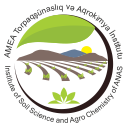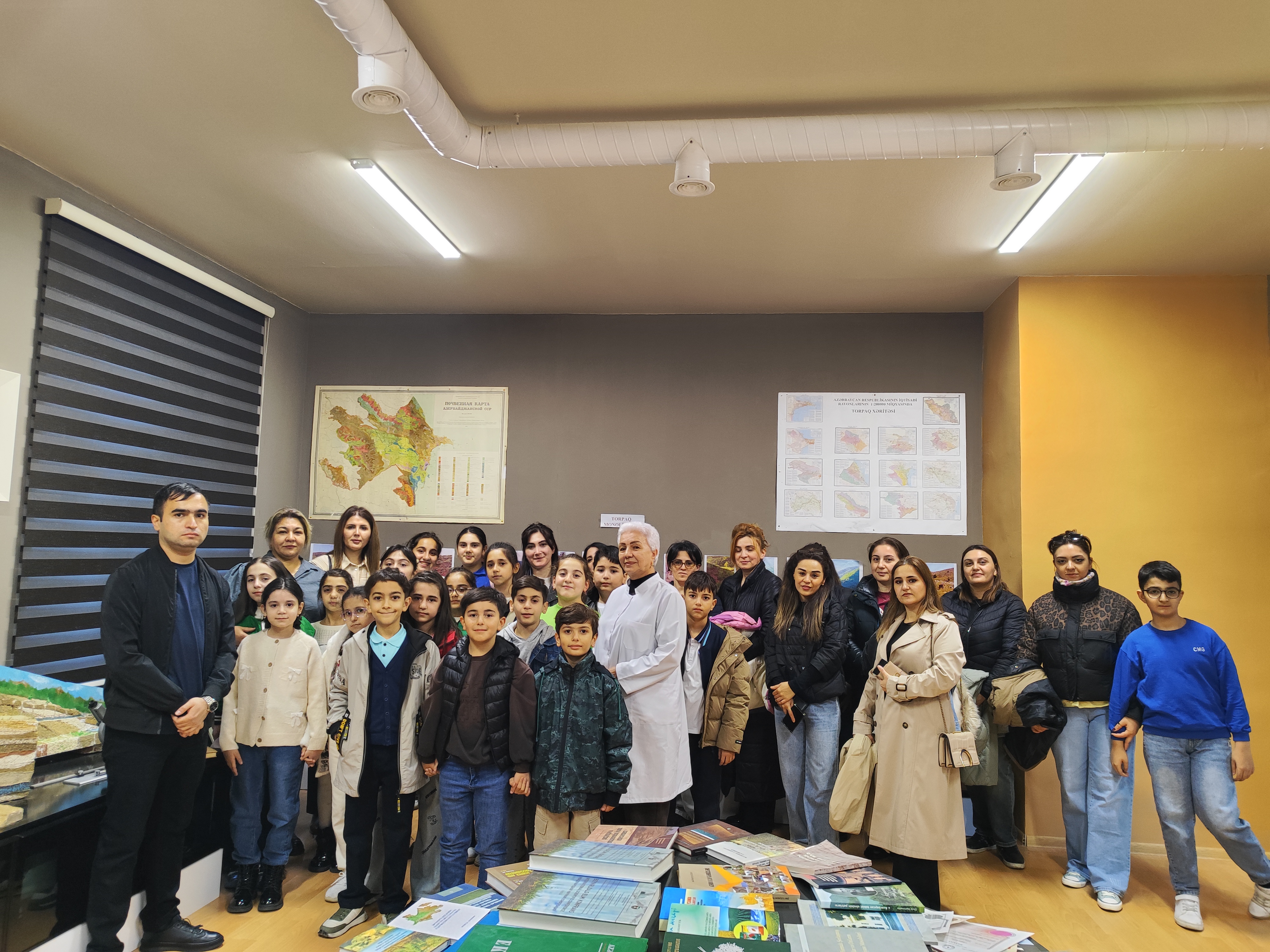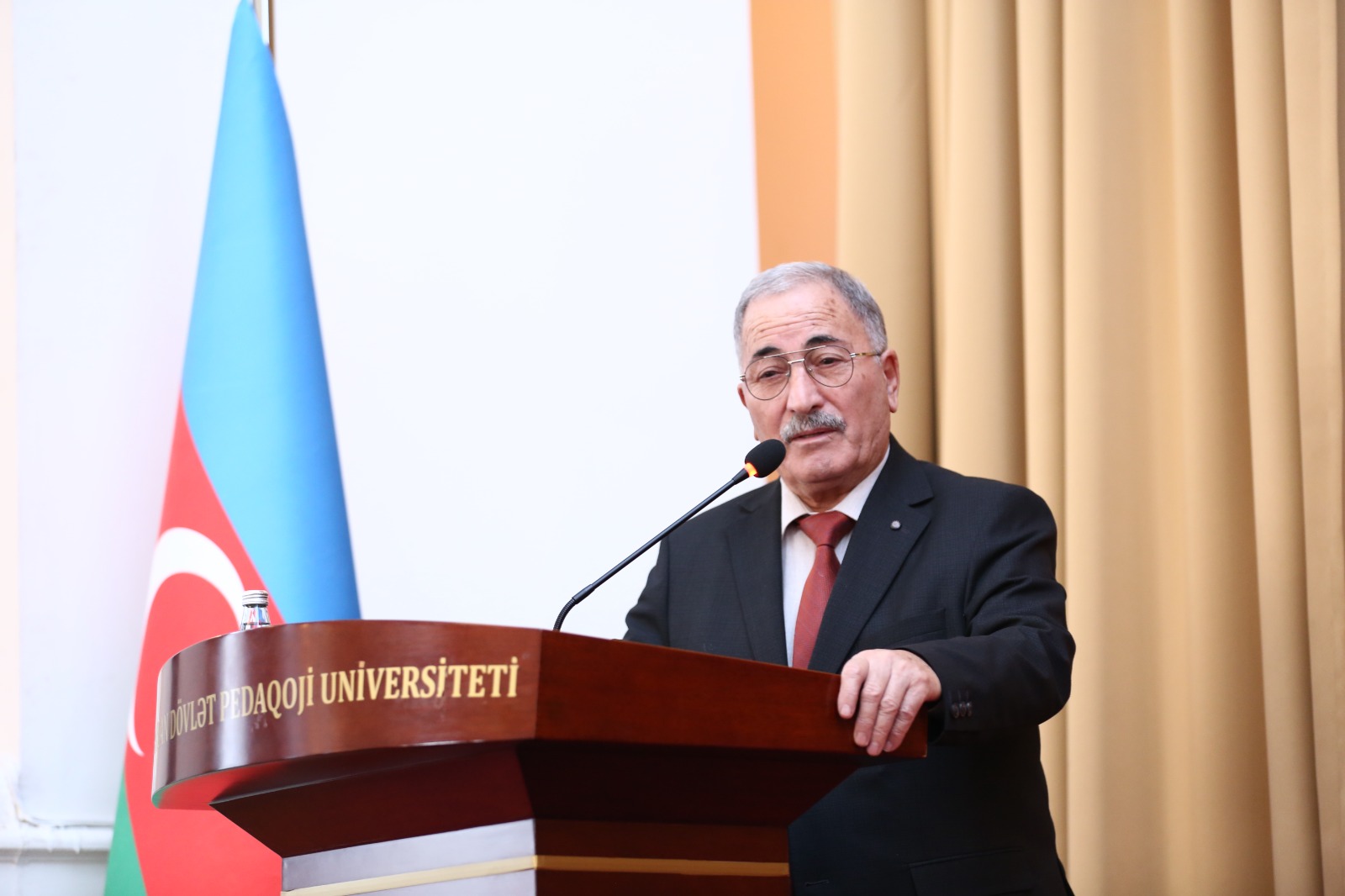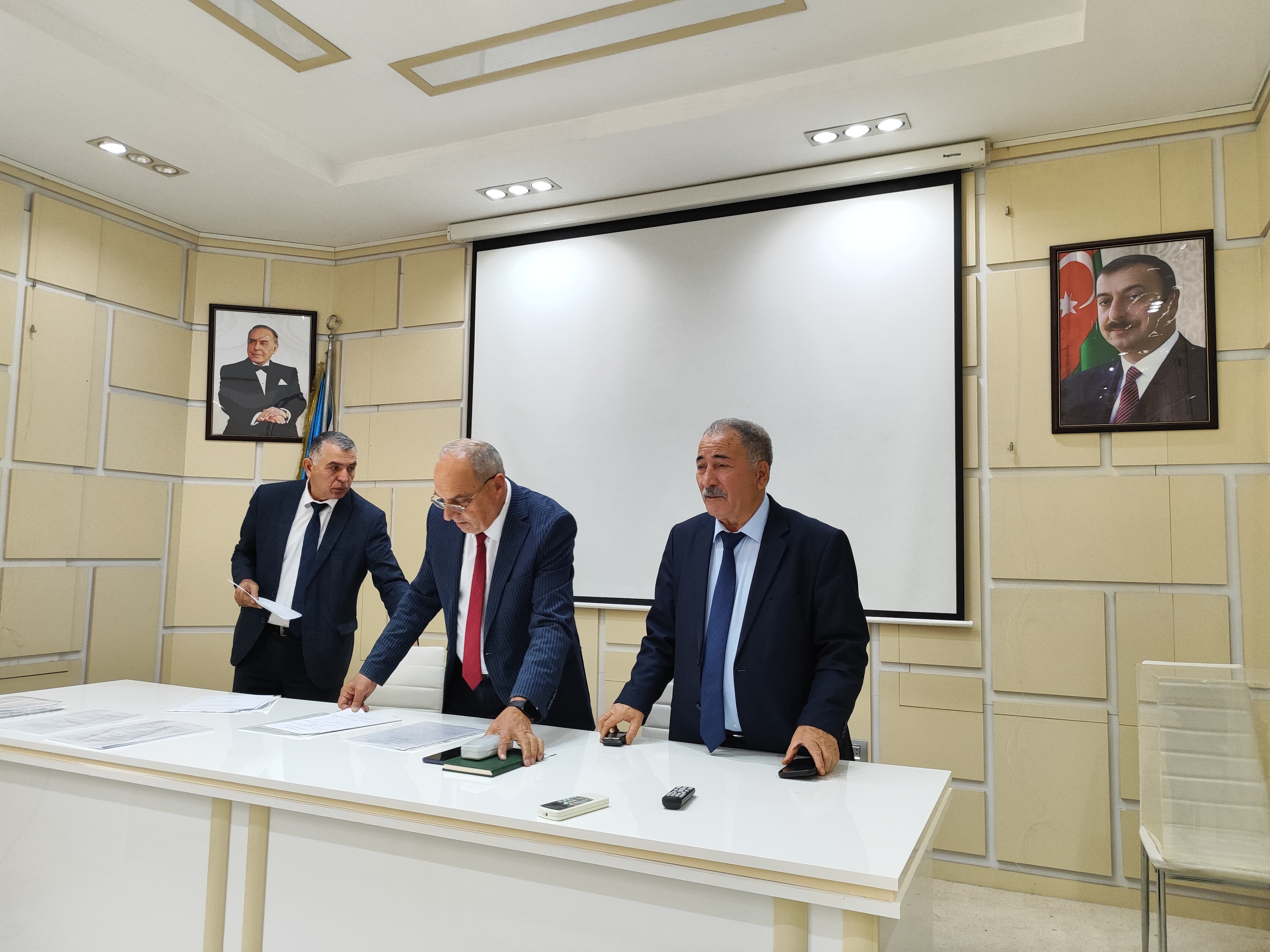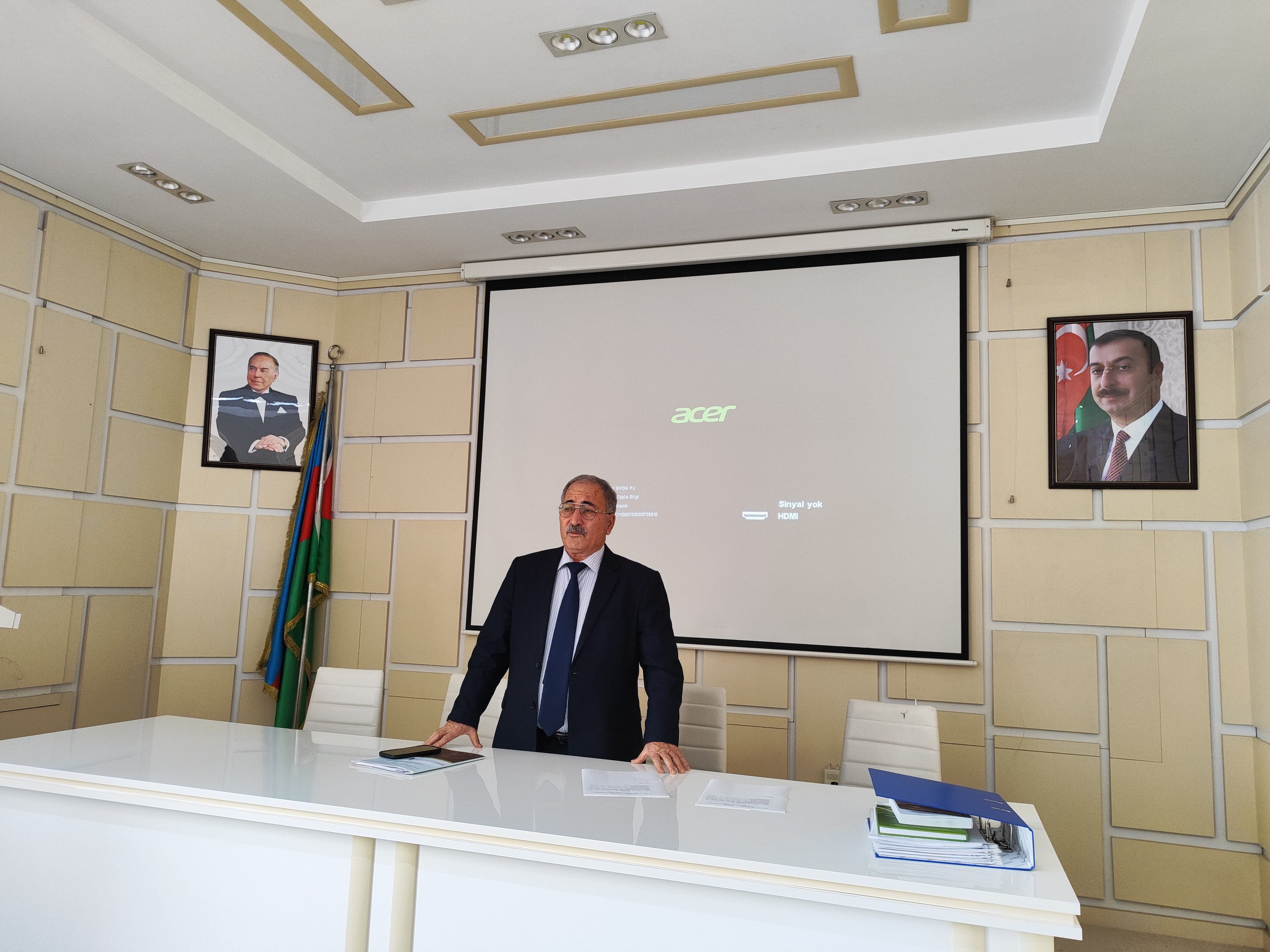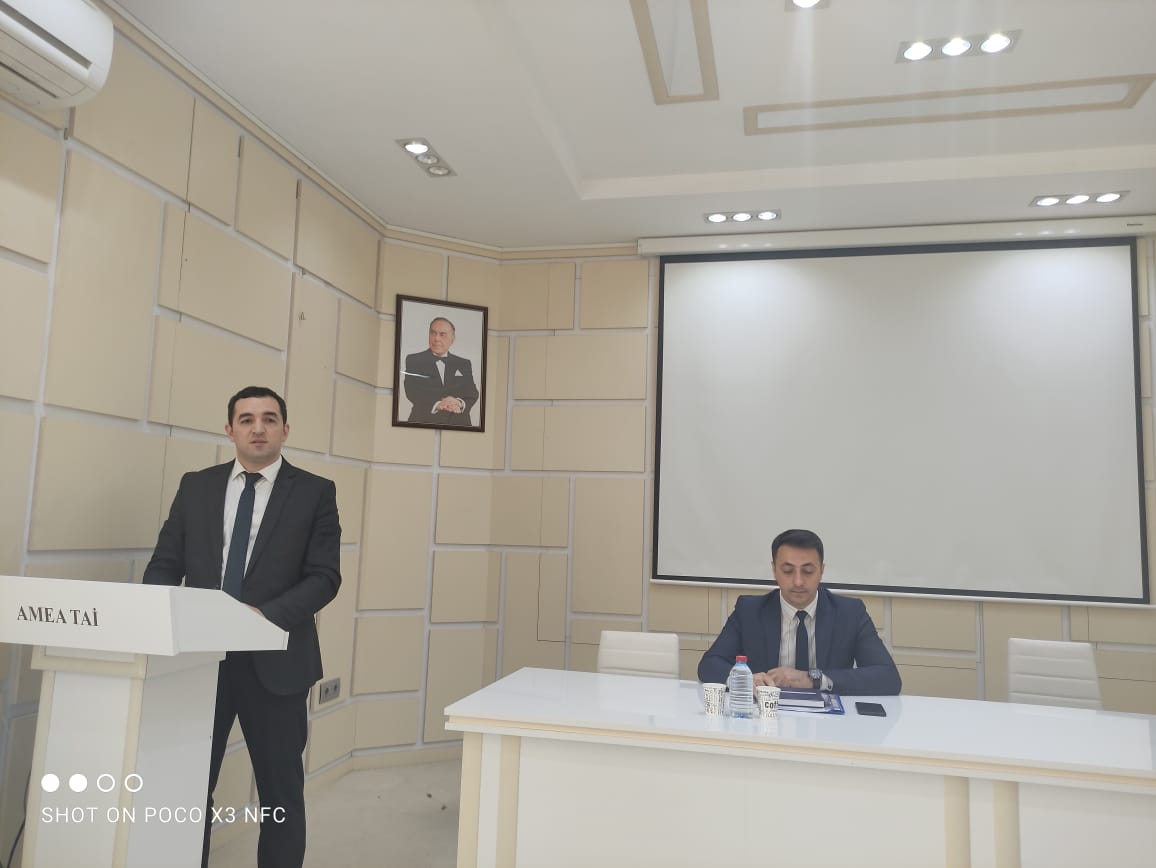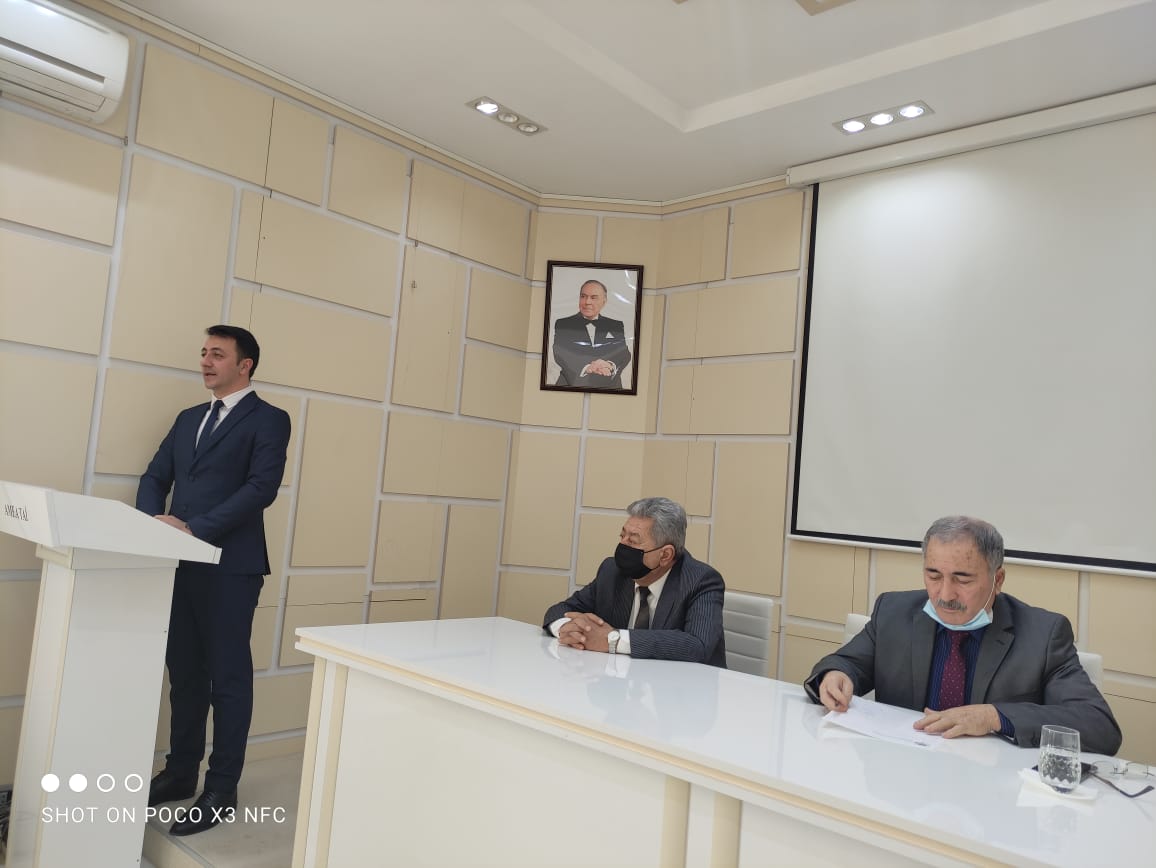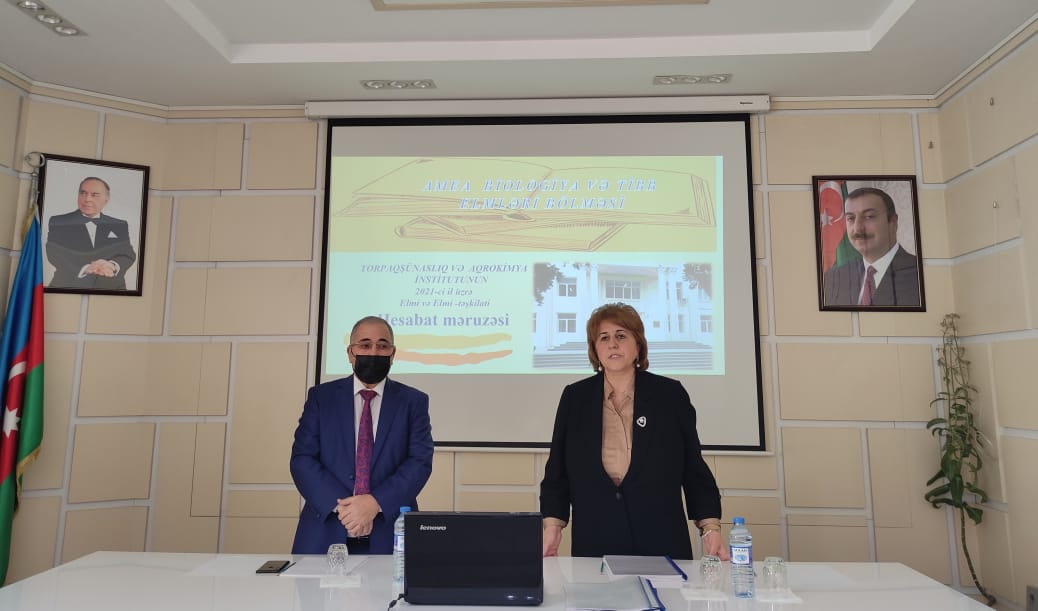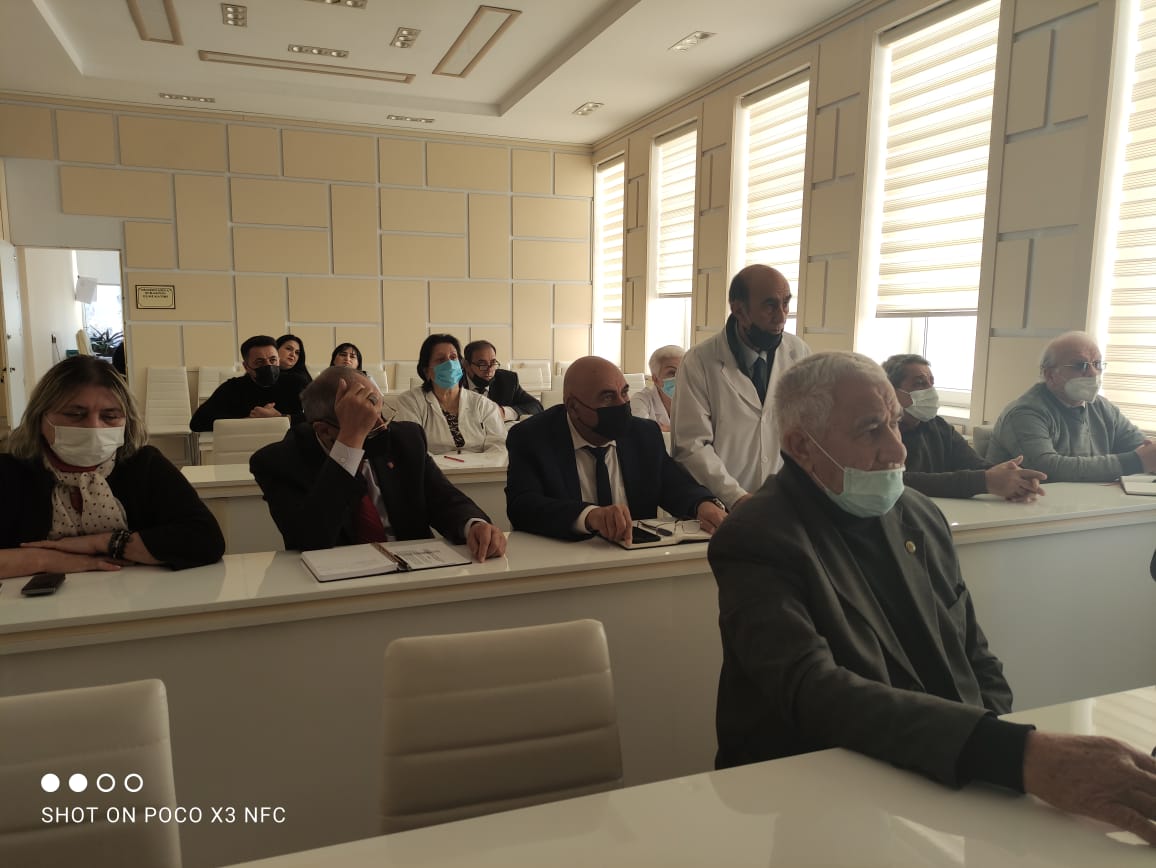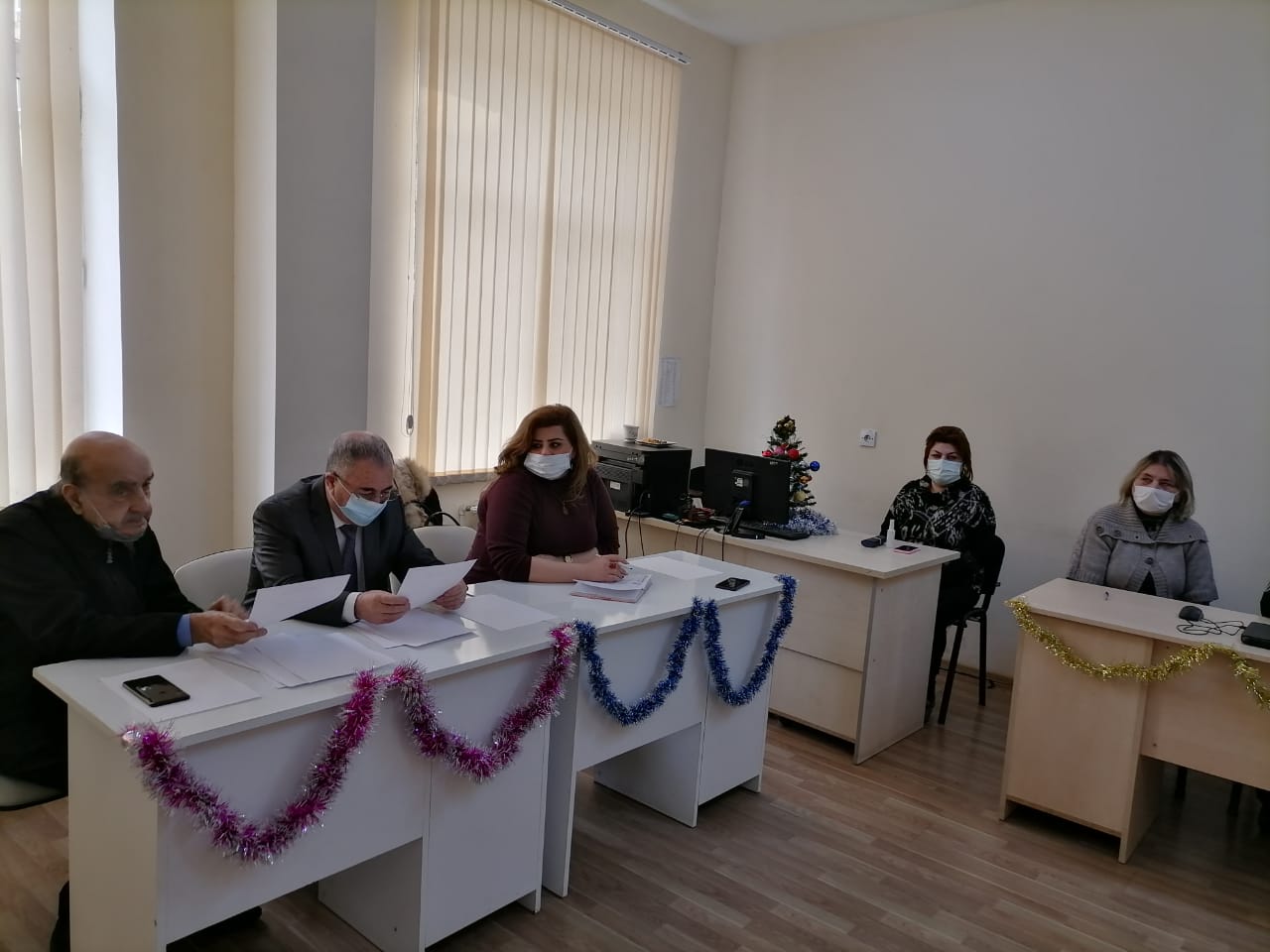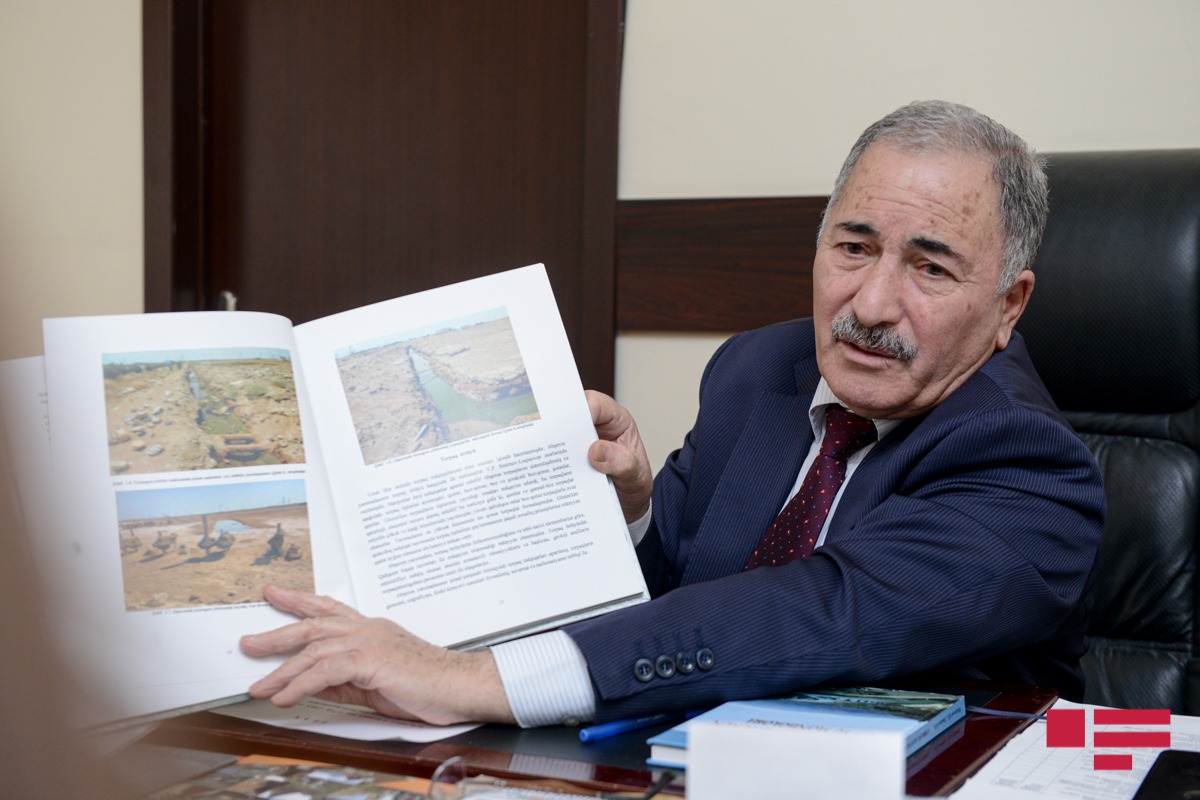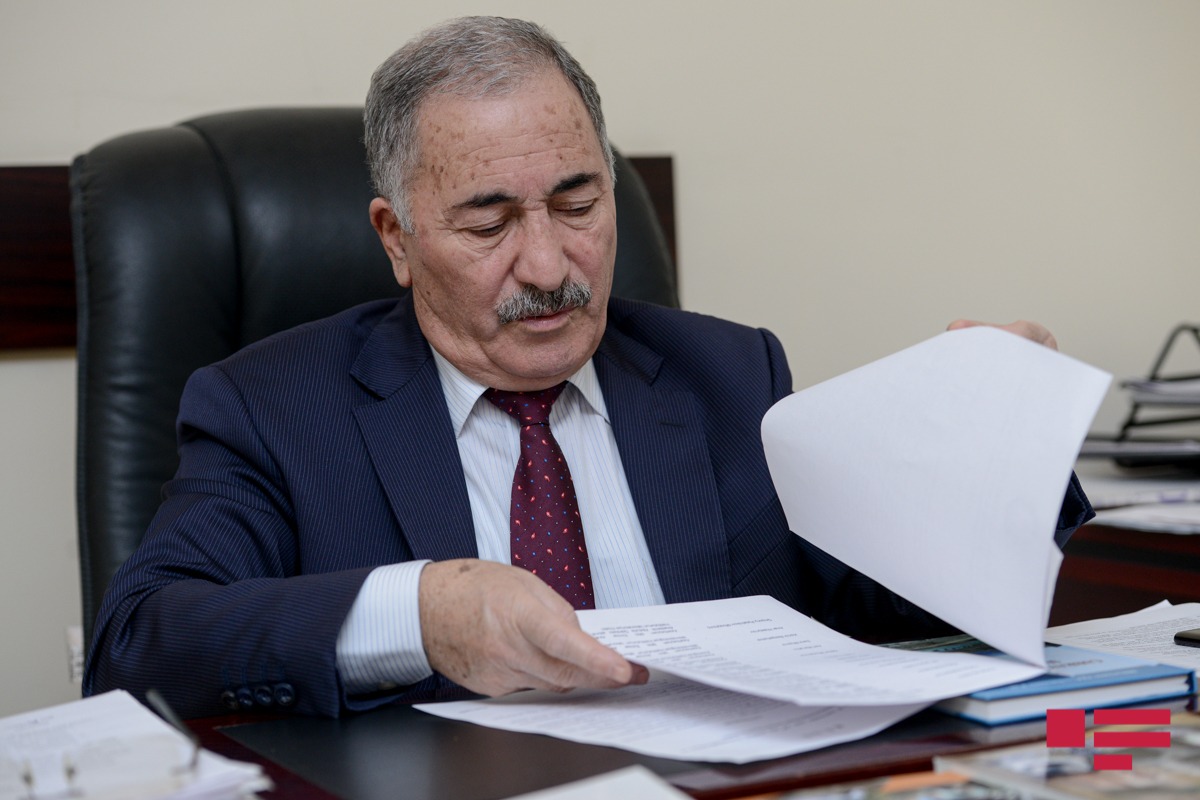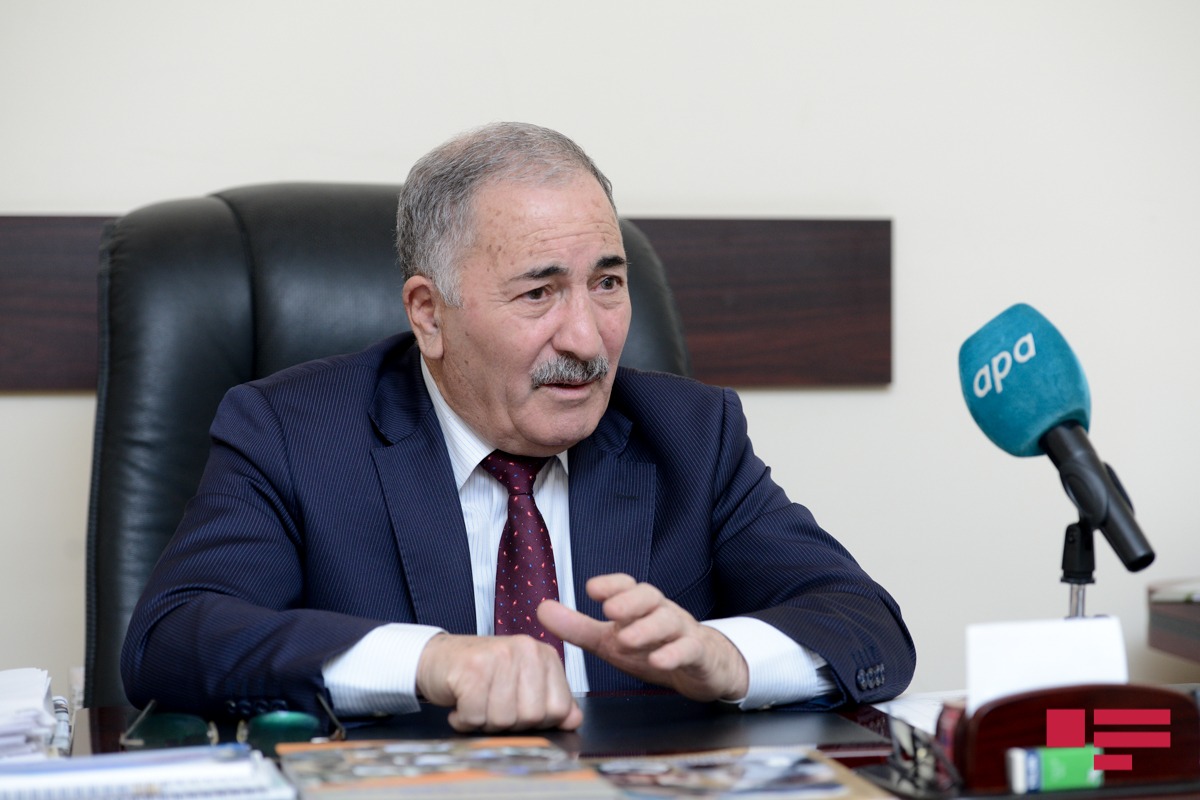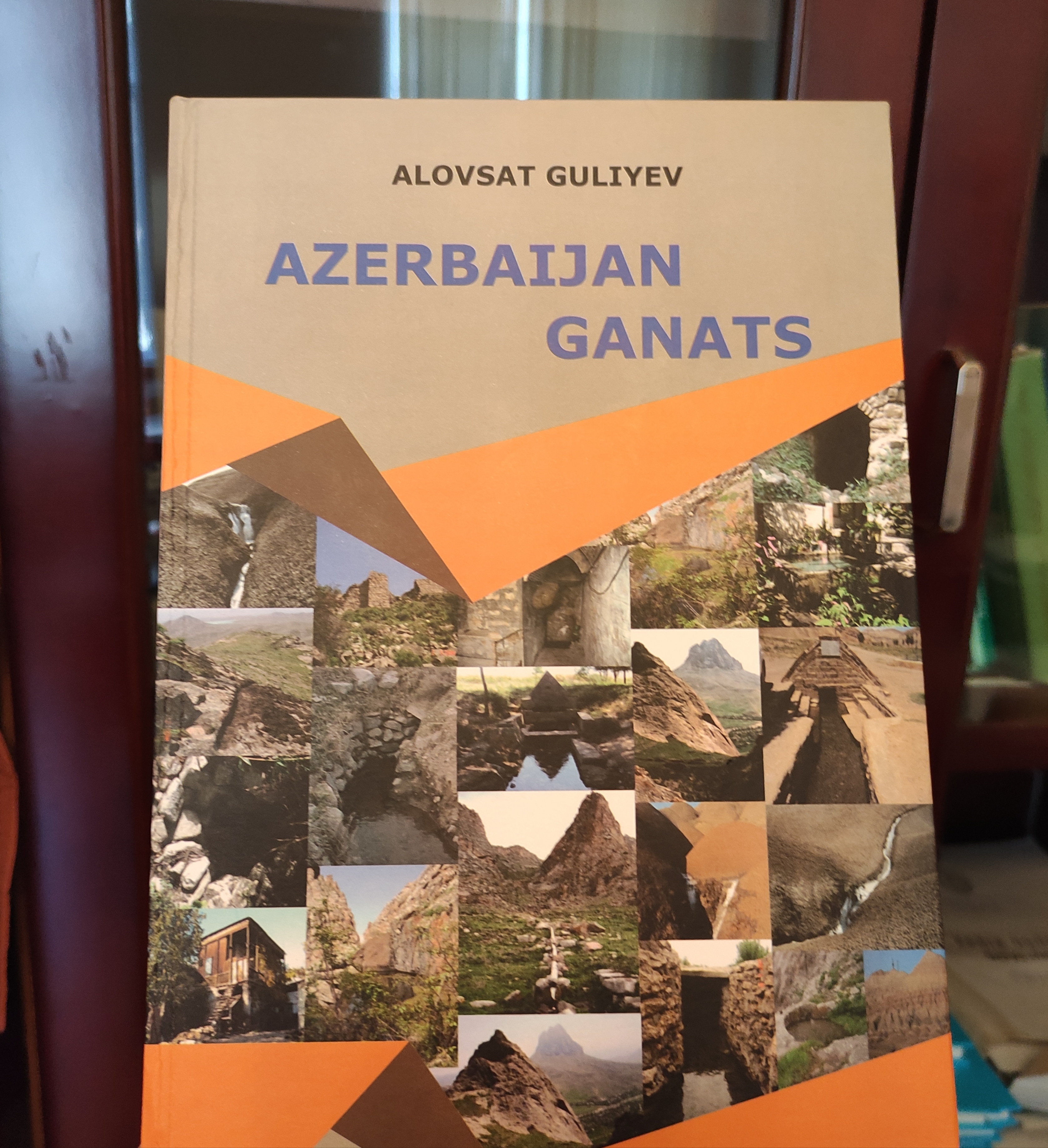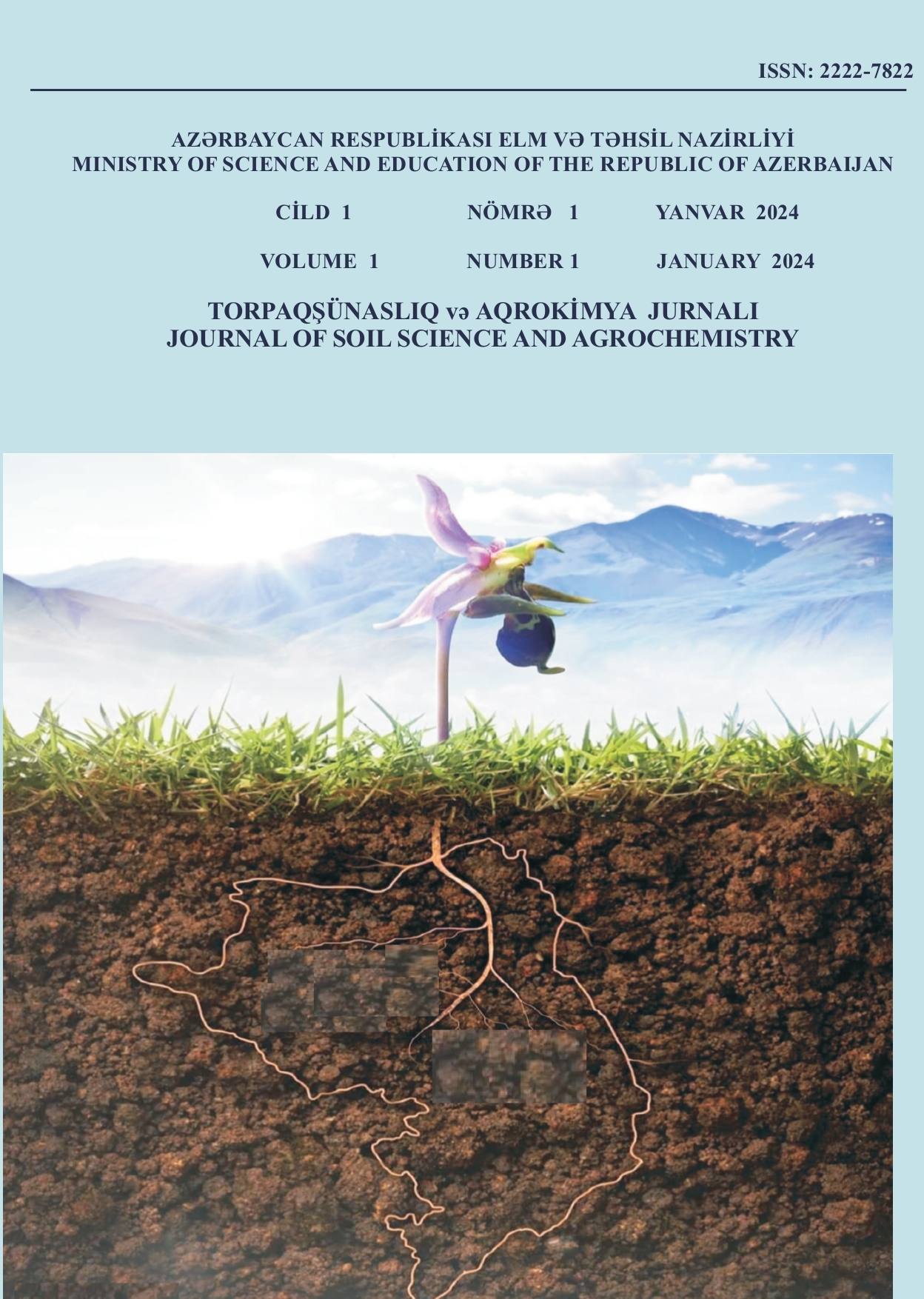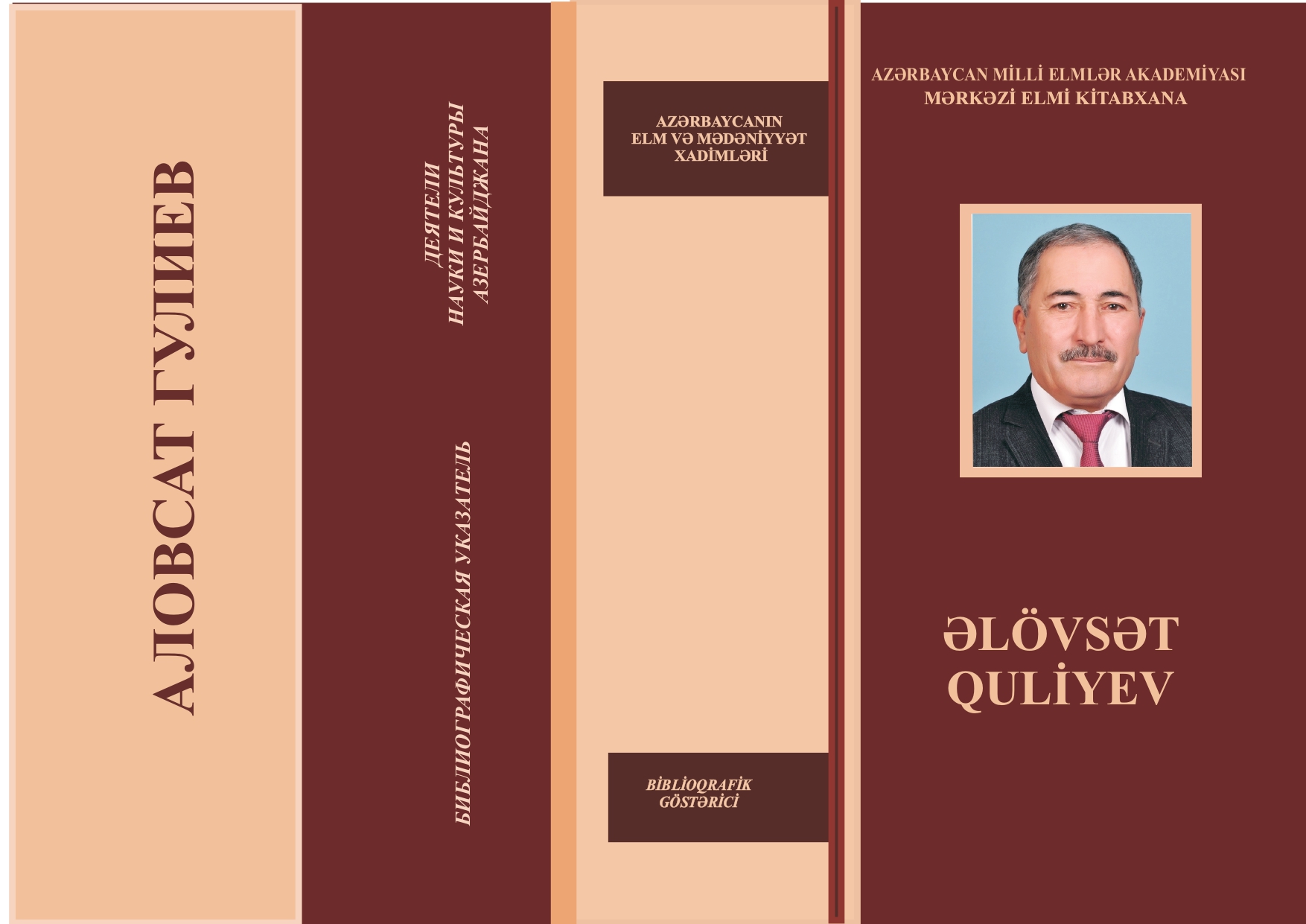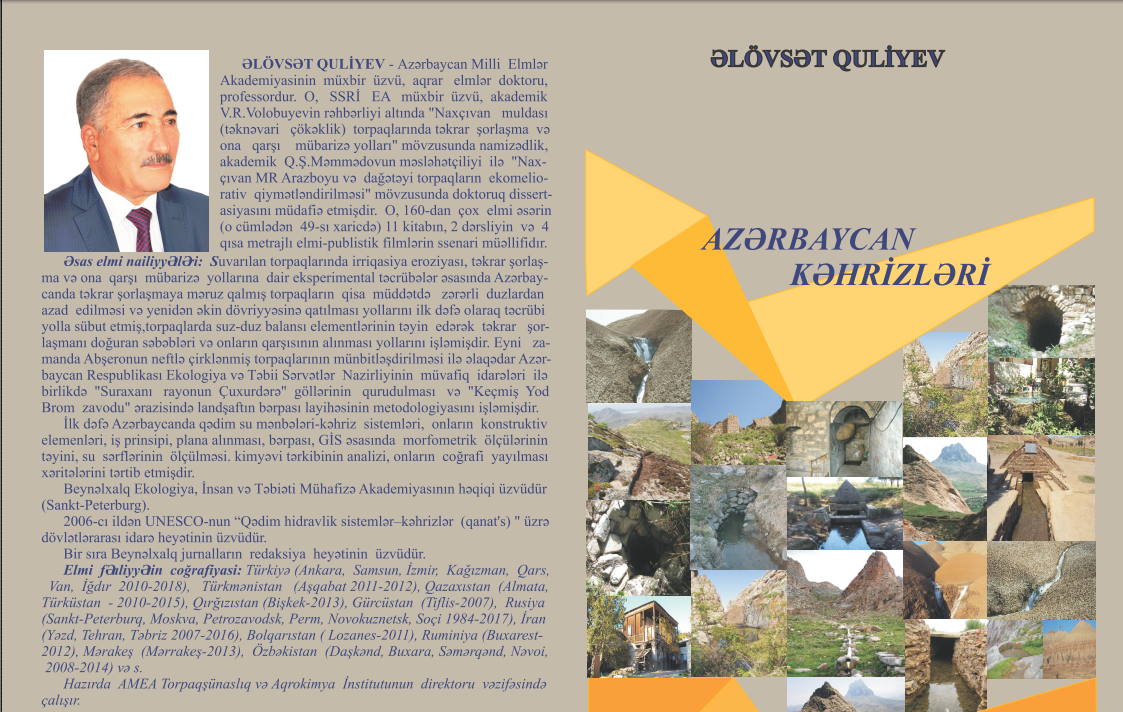Interview of Alovsat Guliyev, Director General of the Institute of Soil Science and Agrochemistry, Corresponding Member of ANAS to APA
- Alovsat, how did the recent changes in the Azerbaijan National Academy of Sciences affect your activities?
- The Azerbaijan National Academy of Sciences has already set a goal to fulfill its mission in accordance with the requirements of the day, paying attention to the ongoing processes in the country. Recently, acting president, academician Arif Hashimov made serious demands to scientists at an introductory meeting at the Department of Biological and Medical Sciences of ANAS. We must do our best for the development of Azerbaijani science. The current new leadership of ANAS pays special attention to the implementation of many things.
- You are a member of the Working Group established to improve and restore the environment in Karabakh. What measures are planned to restore the drinking water supply in Karabakh?
- First of all, the initial restoration work in Karabakh, demining, in short, the restoration of the completely destroyed area must be resolved. At present, the liberated territories are being rapidly restored. The Great Victory Road, road construction in East Zangazur and the construction of the airport in Zangilan are in full swing. The issue of providing minimum living conditions in Karabakh after the road structure is nearing completion. For this purpose, various commissions operate in Karabakh. I am a member of two official commissions. The first of them is the Commission established within “Azersu” OJSC for the purpose of “Management of smart water systems in Aghdam, Fizuli and Jabrayil cities”.
Historically, Shusha had an ancient water supply system. Although supplies were destroyed by Armenians during the occupation, the water system was partially restored shortly after the liberation of Shusha. At the same time, the provision of permanent reliable and quality water in Shusha was on the agenda. It is the commission that represents the various structures and organizations and implements their suggestions and advice in future project work. In the future, the assessment of water resources will be based on the application of innovative technologies in water supply systems. Although the city of Shusha is currently sparsely populated, an increase in settlement is inevitable in the coming years. But in the near future, with the growth of Shusha, full conditions must be created for 25-30 thousand people.
- So how will the issue be resolved?
- It is the established Commission that must approve the final decision. The first option is a project to supply Shusha with water as soon as possible, and the other option is to bring water from the Hakari River system through a pipeline. The hydraulic facility on the Hakari River is expected to supply Shusha with water from a distance of about 100 km. For the time being, it was agreed to completely restore the existing water systems, focusing on the first option, and to build a reservoir with a capacity of 1-1.5 million cubic meters nearby. A team of experts is already completing the field research and exploration work to implement the project. Today, great work is being done in Shusha.
- Your second visit was to Agdam.
- Yes, our second visit was to Agdam. I must say that long before the occupation, after the construction of the Giyasli, Gizil Kangarli, Papravand, Boyahmed and Khachin river reservoirs in Aghdam, I participated in the construction of distribution irrigation canals to the lands of Aghdam. Those places were familiar to me. But when we entered Agdam, the ruins and the consequences of Armenian savagery were before our eyes. Our goal was to solve the project of Aghdam city and related problems. The first issue was to solve the problem of obtaining drinking and irrigation water in Agdam. In general, there is a Khachinchay reservoir in the Aghdam region, the volume of which is 23 cubic meters. There are two other small reservoirs and lakes Aghdam, with a total volume of 5-6 million cubic meters. Thus, in general, Agdam has 30 million cubic meters of irrigation water. At the same time, There is also groundwater in the delivery cones of the Gargarchay and river beds. According to our information, in the pre-occupation period, 62 million cubic meters of water was obtained from 98 kahriz a year in Agdam. Only those in Guzanli were restored from those canals. They are also in non-occupied territories.
Two subartesian wells have been drilled in Aghdam. 20 liters per second and 8 liters of water are pumped from one of the wells. So far, this water provides greenery and construction work there. Large-scale construction work is underway here as well. But our main goal was to raise the issue of proper use of surface water and canals in and around Agdam. At the same time, we must ensure the proper use of groundwater in the supply cones on a scientific basis. In that case, the first task is to monitor and study the canals, to restore the useful ones as soon as possible. In fact, the Kahriz are our ancient heritage monuments. It is our duty to protect and restore them.
- What do the results of the research show?
- Previous research has shown that hated Armenians have turned everything upside down. Most of the hydraulic structures have also been disused. Many human bodies and mines were thrown into Kahriz wells. Even while conducting research in Karabakh, Guzanli residents said that human voices came from kahriz wells during the occupation. These canals are a reliable source of water today.
I would also like to inform you that the total annual water consumption from the canals in the liberated territories is 119.7 million cubic meters per year. According to its geographical distribution, in the last century there were 111 kahriz in Jabrayil region, 98 in Aghdam, 71 in Fizuli and 52 in Nagorno-Karabakh.
As part of the existing working group, our task is to conduct groundwater surveys in demined areas in the near future and evaluate the results obtained. In this work, a wide range of research groups consisting of institutes and scientists of ANAS will be established. Let me note that our scientists are particularly interested in participating in this research.
- According to the new project, wastewater will be managed in Aghdam after full provision of housing. What will be done for this?
- This issue has been resolved in the "Smart City" and "Smart Village" projects. Of course, as a representative of ANAS, I participated in the discussion of the project of Aghdam city. There are a lot of unresolved issues that need to be addressed, as well as the smallest issues that will create any environmental problems in the future.
We were also interested in the issue of where the wastewater in Aghdam will be discharged in the future, taking into account modern scientific and technical innovations. Because the geomorphological and geological structure of the area shows that all excess water must flow directly into the Gargar River. This problem, which will arise from the ecological point of view, as well as at the end of urban development, should have been solved in advance. For this purpose, the project envisages the use of waste products in Aghdam through the plant, the separation of solid and liquid products, water purification and irrigation as technical water, and the use of solid waste products in the form of manure in greenery. This method is used in both world and Azerbaijani practice. For example, Using this experience at the Hovsan Aeration Station, it was tested on nursery farms of the Ministry of Ecology and Natural Resources, as well as at the former Iodine-Bromine Plant, and good results were obtained. A plant for wastewater recycling will be built in Agdam and the treated water will be used efficiently. It is obvious that the problem of technical and drinking water in the country will be solved in the future.
- How much of the land in Karabakh is suitable for cultivation and how much is unusable?
- So far, so much work is being done in Karabakh that the answer to this question will be given in the near future on the basis of specific research materials. There are such problems on the ground that it requires us to conduct an accurate search of the battlefields of Karabakh. The term "military erosion" will probably be added to science for the first time. During the war, artillery shells, mines turned the soil upside down, chemicals mixed with the soil, the land was not used for 30 years, and so on. There are issues. The processes taking place in these lands must be studied. Existing war facts must be taken into account. The composition of the weapons used during the war must be determined during the research. Because as a result of the use of weapons, heavy metals have spread to the ground. Work is currently underway on fertile soils, but those that have been subjected to military erosion, At the same time, after the demining of the Ohanyan Line, it is necessary to conduct soil surveys here. The study will determine how much nutrients are in these soils, which plants can be replanted, and how much fertilizer should be applied to these soils.
- What measures are being taken to restore the liberated lands?
- No research has been conducted in Karabakh for 30 years. The most fertile land of Karabakh is in Agdam. There are up to 50,000 hectares of irrigated land. Fuzuli, Jabrayil and Zangilan also have a rich soil environment. As a scientist, I would like to be closely involved in this research, so that scientists and researchers of our Institute can start working here. The good thing is that we have the necessary opportunities for this.
Radical changes are taking place in ANAS. The mobile agrarian laboratory placed on a Mercedes car worth $ 200,000, obtained on the basis of a project completed in 2015 at our Institute, has been in the yard of the Institute for 6 years.
Despite my repeated written and oral appeals, this car was not transferred from the balance of the Science Development Fund (SDF) to the balance of ANAS. One of the first decisions of academician Arif Hashimov after the last change in ANAS was connected with this issue. Finally, this issue was resolved and the mobile agrarian laboratory was transferred to the institute.
If the car had been delivered on time, we could have closely advised farmers, clarified the need for fertilizer by taking soil samples, protected the soil from chemical contamination, and used fertilizers sparingly. We can carry out these processes in Karabakh. There is no instruction yet that the state will entrust this work to the Institute of Soil Science and Agrochemistry.
- There is also the issue of water poisoning in Karabakh. How long can the damage to these water sources be repaired?
- The river basin has been seriously polluted as a result of the discharge of high-chemical production water directly from the Gajaran copper-molybdenum plant and the Gafan copper-ore refinery in Armenia into the Oxchuchay River in Zangilan. Therefore, a Special Commission has been established within the Ministry of Ecology and Natural Resources. Scientists of the Institute of Soil Science and Agrochemistry of ANAS are also represented in this Commission. Water samples were taken from the Oxchuchay and physical and chemical analyzes were carried out. The main question is where to collect the heavy metals that come with the water, how to neutralize them.
Because the pollution of the Oxchuchay, in turn, leads to the pollution of the Araz River. A working group has been set up to conduct physical, chemical and biological monitoring in Oxchuchay. The aim is to control the level of heavy metal pollution in the river's sediments. The amount of heavy metals in the water was found to be excessive. Working groups consisting of representatives of relevant government agencies will be established to conduct a comprehensive approach to the assessment of the current situation in Oxchuchay, physical, chemical and biological analysis. Our Institute is among these institutions. Regular monitoring will be carried out to determine the quality of river water and assess the biological condition. The contamination area will be identified and mapped.
The main way to prevent this pollution is to organize the operation of the Gajaran copper-molybdenum plant without damaging the ecosystem. The plant is owned by the German company Cronimet Holding. Only in this case, it is possible to eliminate the facts of gross violations of eco-standards and prevent serious adverse effects on human health.
REFERENCE: APA
